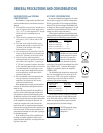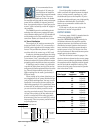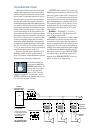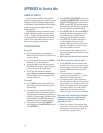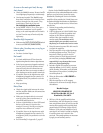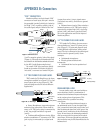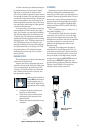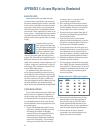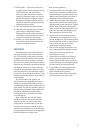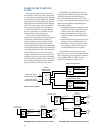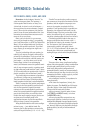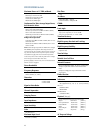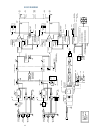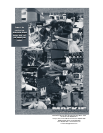37
10. Walk outside — look at the horizon. See
any radio towers? Locate potential sources
of RF interference and plan for them
before you begin construction. Know the
frequency, transmitter power, etc. You can
get this information by calling the station.
Remember that many broadcast stations
change the antenna coverage pattern and
transmitter power at night.
11. Don’t use hardware-store light dimmers.
12. Don’t allow for anything other than micro-
phone inputs at stage/altar locations.
Supplying line inputs at these locations is
an invitation for misuse. Make all sources
look like microphones to the console.
13. Balance (or at least impedance balance)
all connections that are remote from the
console’s immediate location.
GROUNDING
Grounding exists in your audio system for
two reasons: product safety and noise reduc-
tion. The third wire on the power cord exists
for product safety. It provides a low-resistance
path back to the electrical service to protect
the users of the product from electrical shock.
Hopefully, the resistance to ground through the
safety ground (third wire) is lower than that
through the user/operator to ground. If you re-
move this connection (by breaking or cutting
the pin off, or by using a ‘ground cheater’), this
alternate ground path ceases to exist, which is
a safety hazard.
The metal chassis of the product, the
ground connections provided by the various
connectors, and the shields within your con-
necting cables provide a low-potential point for
noise signals. The goal is to provide a lower im-
pedance path to ground for noise signals than
through the signal wiring. Doing so helps
minimize hum, buzz, and other extraneous
non-audio signals.
Many “authorities” tell you that shields
should be connected only at one end. Some-
times this can be true, but for most (99%)
audio systems, it is unnecessary. If you do ev-
erything else correctly, you should be able to
connect every component of your audio system
using standard, off-the-shelf connecting cables
that are available at any music store.
Here are some guidelines:
1. Use balanced lines if at all possible. They
provide better immunity to induced noise
and ground loops. Remember that you can
balance a line by inserting in-line a piece of
equipment that has a balanced output.
2. Avoid using three-phase power lines since
they are usually used for air conditioning
and other heavy power equipment. If using
240VAC single phase with center-ground
power, connect all audio equipment to one
side of the AC power, and all lighting and
other equipment to the other side.
3. Be sure all AC outlet safety grounds are
connected to one common point in a star
ground arrangement. This common ground
point should then tie back to earth ground
at the service entrance by one heavy
stranded wire, #2 gauge or larger.
4. Don’t cut the third pin off the power cord.
Carry some ground-lifter adapters and use
them only if you have to plug into an
ancient two-wire outlet.
5. Cables that are too long are less likely to
pick up hum if you uncoil them in their
entirety, and then find a place to stow the
excess. Leaving the excess coiled only helps
the cable pick up hum more efficiently.
6. If you bundle your cables together, don’t
bundle AC wiring and audio wiring to-
gether. Bundle them separately.
7. If your sound system insists on humming,
you may want to teach it the words.



